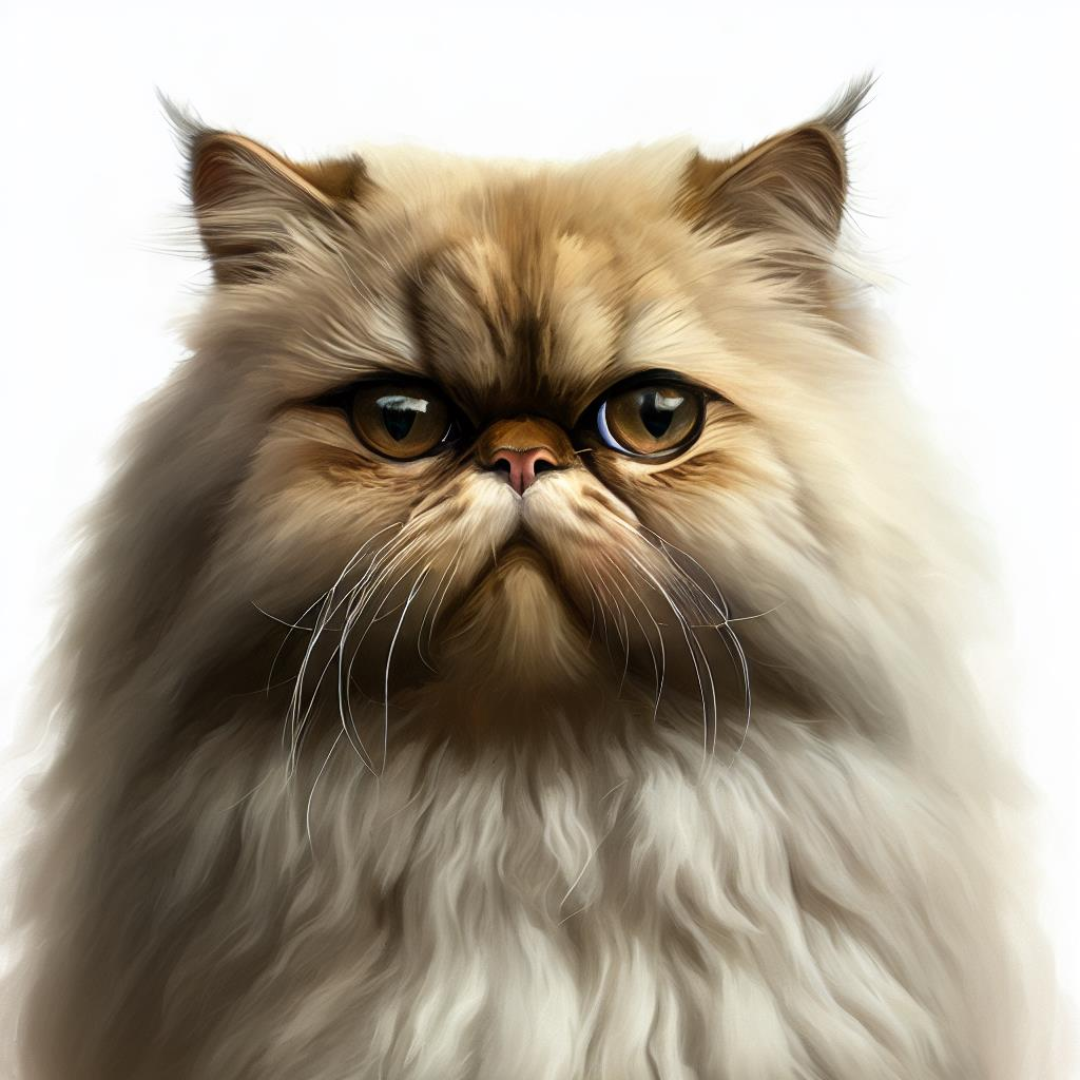Are you a cat lover who can’t get enough of those luxurious and regal Persian cats? Look no further! “The Regal Demeanor of Persian Cats” is the ultimate product for cat enthusiasts like yourself. Whether you’re a seasoned Persian cat owner or just starting your journey into the world of feline companionship, this product is here to provide you with comprehensive and engaging content about all things Persian cats. From grooming tips and health care advice to understanding their unique personalities and characteristics, this product has it all. Get ready to be captivated by the elegance and grace of these majestic cats as you delve into the mesmerizing world of “The Regal Demeanor of Persian Cats.”
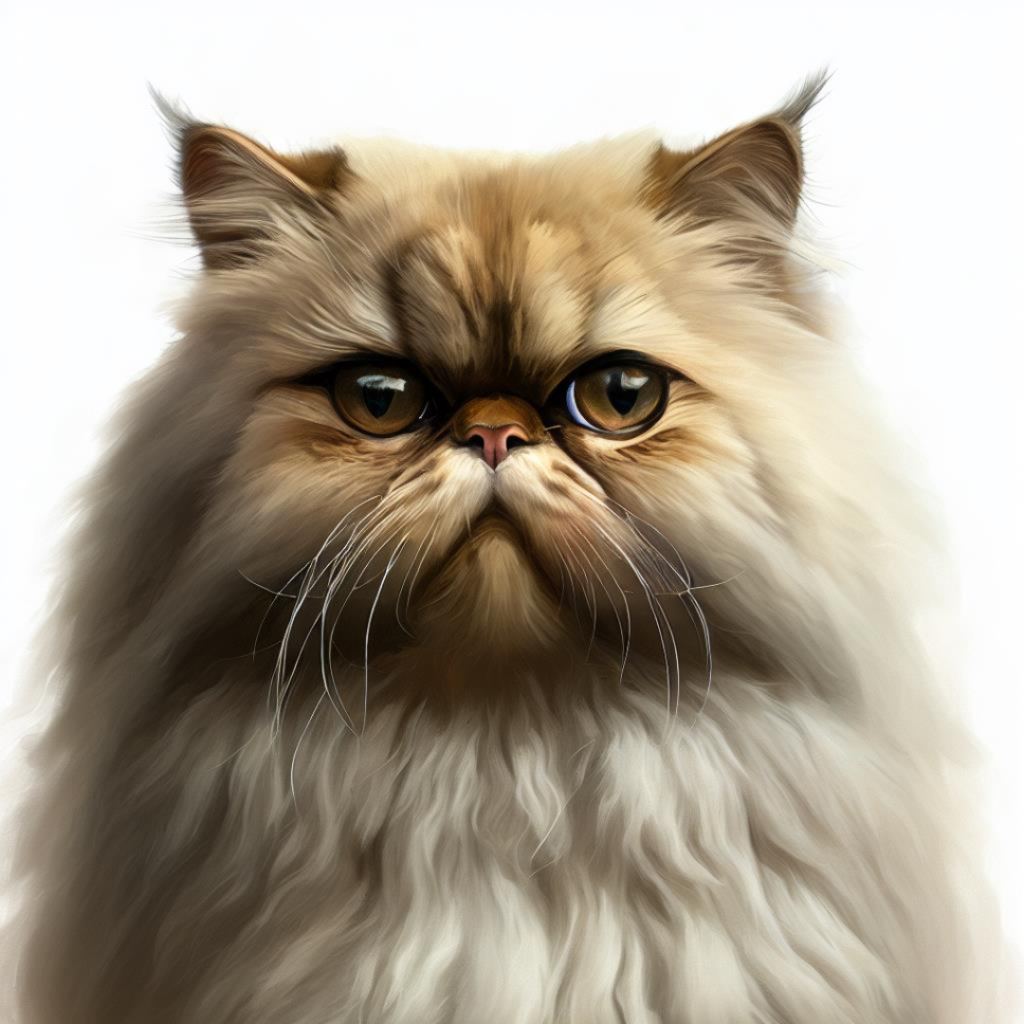
Physical Attributes of Persian Cats
Distinctive Facial Features
Persian cats are known for their distinctive facial features that set them apart from other cat breeds. One of the most prominent features is their round, flat face, which gives them a sweet and innocent expression. They have a broad skull and a short, wide nose. Their chin is strong and well-developed, which adds to their regal appearance. Another unique characteristic is their small and upturned nose, often referred to as a “pug nose.” This gives them a cute and doll-like look. The combination of these facial features gives Persian cats their iconic and recognizable appearance.
Long and Luxurious Coat
One of the most striking physical attributes of Persian cats is their long and luxurious coat. Their fur is dense and thick, with a soft and silky texture. This coat requires regular grooming to prevent matting and keep it in good condition. Persian cats come in a wide range of colors and patterns, including solid colors, tabby patterns, and bi-colors. Their coat can be found in various shades of white, black, blue, cream, red, and many more. The beauty and elegance of their coat make Persian cats truly stand out.
Short and Stocky Body
Persian cats have a short and stocky body, which adds to their overall charm and grace. They have a compact and robust build, with a well-muscled physique. Despite their stockiness, Persian cats move with grace and elegance. Their body is well-balanced, with a broad chest and a deep abdomen. Their legs are short and sturdy, and their paws are round and firm. This body structure gives Persian cats a distinct and unique appearance, further enhancing their regal presence.
Large and Round Eyes
One of the most captivating features of Persian cats is their large and round eyes. Their eyes are set wide apart and are expressive and soulful. They have a gentle and serene gaze that reflects their calm and gentle nature. The color of their eyes varies depending on their coat color, ranging from copper, green, blue, or odd-eyed (each eye a different color). The combination of their round face and large, expressive eyes gives Persian cats an irresistible charm that is hard to resist.
Small and Rounded Ears
Persian cats have small and rounded ears that sit low on their head. Their ears are set wide apart and have a slight forward tilt. The hair on their ears is usually long and fluffy, which adds to their overall cuteness. Despite their small size, Persian cats have excellent hearing capabilities. Their ears play a crucial role in their communication and social interactions, allowing them to pick up on sounds and signals from their environment. The size and shape of their ears further contribute to the distinctive appearance of Persian cats.
Personality Traits of Persian Cats
Calm and Gentle
Persian cats are known for their calm and gentle nature. They have a laid-back and relaxed demeanor that makes them excellent companions for both individuals and families. They are not usually prone to aggressive behavior and prefer a peaceful and harmonious environment. Persian cats enjoy lounging and spending quality time with their human companions. Their calmness and gentle nature make them suitable pets for people with busy lifestyles or those looking for a more serene and quiet presence in their homes.
Independent and Reserved
While Persian cats are affectionate, they also have an independent and reserved side to their personality. They have a sense of self-assurance and are comfortable spending time alone. This independence does not mean they don’t enjoy human company; rather, they appreciate having their own space and moments of solitude. Persian cats may not always seek constant attention and may prefer observing their surroundings from a distance. This reserved nature adds an air of mystery to their personality, making them intriguing companions.
Quiet and Observant
Persian cats are known for their quiet and observant nature. They are not known to be excessively vocal like some other cat breeds. Persian cats prefer to express themselves through body language and subtle cues. They are excellent observers, constantly analyzing their environment and the people around them. This observant nature allows them to adapt well to different situations and react accordingly. While they may not be the most talkative cats, their attentive and perceptive nature makes them great companions for those who appreciate a more subtle form of communication.
Affectionate and Loyal
Despite their independent nature, Persian cats are also highly affectionate and loyal to their human companions. They form strong bonds and develop deep attachments to the people they trust. Persian cats enjoy being around their loved ones, seeking out moments of closeness and physical contact. They are known for their gentle and loving nature, often displaying their affection through gentle head bumps, purring, and cuddles. This loyalty and devotion make Persian cats a cherished presence in the lives of their owners.
Adaptable and Low Energy
One of the notable personality traits of Persian cats is their adaptability and low energy levels. They are content with a relaxed and sedentary lifestyle, making them suitable pets for apartment dwellers or individuals with a less active lifestyle. Persian cats do not require extensive exercise or mental stimulation and are generally satisfied with a calm and comfortable environment. They are not known for being overly playful or mischievous but rather enjoy leisurely activities and leisurely play sessions. Their low energy levels make them ideal companions for those seeking a more relaxed and low-maintenance pet.
History and Origins of Persian Cats
Ancient Ancestors
The history of Persian cats can be traced back to ancient times. While the exact origins of this breed are uncertain, it is believed that Persian cats have existed for thousands of years. They are thought to have originated in the region of Persia, which is present-day Iran. Persian cats have a storied past and have been mentioned in various ancient texts and artworks throughout history. Their ancestors were revered for their beauty and grace, with their images often depicted in ancient Mesopotamian art.
Development of the Persian Breed
Over the centuries, the Persian breed underwent various developments and refinements. Persian cats were highly sought after and cherished by nobles and royalty, who selectively bred them for their distinct appearance and luxurious coat. It wasn’t until the late 19th century that the Persian cat, as we know it today, started to take shape. Breeders focused on developing specific traits, such as the round face, small ears, and long, flowing coat. These efforts resulted in the Persian cat becoming a recognized breed and gaining popularity worldwide.
Popularity and Spread
The popularity of Persian cats grew rapidly in the 19th and 20th centuries, especially in Europe and the United States. Their regal appearance and gentle nature captivated cat enthusiasts, leading to an increase in demand for Persian cats as pets. The breed became a symbol of elegance and sophistication, favored by both cat lovers and high society. Persian cats quickly gained a reputation as show cats and household companions, admired for their beauty and grace. Today, Persian cats continue to be a beloved breed, with a substantial and dedicated following.
Breed Standards and Registries
To maintain the integrity and standards of the Persian breed, various cat registries and organizations have established guidelines and breed standards. These standards outline the specific physical characteristics that define a Persian cat. These include the round face, small ears, large eyes, and long flowing coat. Breeders and exhibitors adhere to these standards when breeding and showing Persian cats. The Cat Fanciers’ Association (CFA) and The International Cat Association (TICA) are two prominent organizations that recognize and register Persian cats, ensuring that they meet breed standards.
Caring for Persian Cats
Grooming Needs
One of the most important aspects of caring for a Persian cat is regular grooming. Their long and luxurious coat requires frequent brushing to prevent matting and tangling. Daily brushing is recommended to keep their fur in good condition and minimize shedding. In addition to brushing, Persian cats may also require regular bathing to keep their coat clean and free from oils and dirt. It is essential to use cat-specific grooming tools and products to ensure the comfort and well-being of your Persian cat during grooming sessions.
Diet and Nutrition
Maintaining a balanced and nutritious diet is crucial for the health and well-being of Persian cats. Their diet should consist of high-quality cat food that provides the necessary nutrients and meets their specific dietary requirements. Persian cats may have a tendency to overeat, so portion control and monitoring their weight is important to prevent obesity. It is recommended to consult with a veterinarian to determine the appropriate diet and feeding schedule for your Persian cat, taking into consideration their age, weight, and any specific dietary needs they may have.
Exercise Requirements
While Persian cats are generally low-energy and not as active as some other cat breeds, they still require some form of physical activity to maintain their health. Engaging your Persian cat in interactive play sessions can help provide mental stimulation and keep them physically active. This can include playing with toys, using puzzle feeders, or utilizing scratching posts for stretching and exercise. However, Persian cats should not be subjected to intense physical activities or forced exercise. It is important to respect their low-energy nature and provide them with a calm and comfortable environment.
Health Concerns
Like all cat breeds, Persian cats may be susceptible to certain health issues that potential owners should be aware of. Some common health concerns in Persian cats include respiratory problems, dental issues, polycystic kidney disease (PKD), and tear duct obstructions. It is essential to schedule regular veterinary check-ups to monitor their health and address any potential health issues promptly. Maintaining good dental hygiene and ensuring a clean living environment can help prevent some of these health concerns. Responsible breeding practices can also help reduce the incidence of hereditary health problems in Persian cats.
Environmental Enrichment
Creating an enriching environment for your Persian cat is important to keep them mentally stimulated and happy. Providing scratching posts, climbing trees, and interactive toys can offer opportunities for physical exercise and mental engagement. Persian cats also enjoy lounging in cozy spots near windows, where they can observe the outside world. Creating a safe and stimulating indoor environment, enriched with scratching surfaces, hiding spots, and perches, can help prevent boredom and provide your Persian cat with an enriching living space.

Understanding Persian Cat Behavior
Communication Signals
Persian cats communicate through various signals and cues, both verbal and non-verbal. While they are not known for being excessively vocal, they may use soft meows or purring to express their needs or contentment. Persian cats also communicate through body language. For example, a tucked tail may indicate fear or discomfort, while an upright tail signifies confidence. They may also use their ears and eyes to communicate their emotions, such as flattened ears when feeling threatened or dilated pupils when excited or curious. Understanding these communication signals can help you better understand and respond to your Persian cat’s needs.
Territorial Behavior
Like most cats, Persian cats can exhibit territorial behavior. They have a strong sense of territory and may mark their surroundings with scent markers, such as rubbing their cheeks or scratching objects. Persian cats may also display territorial aggression towards other cats or animals that enter their perceived territory. It is important to provide each Persian cat with their own space and resources to minimize territorial conflicts. Proper socialization and gradual introductions to other pets and people can help reduce territorial behavior and promote a peaceful and harmonious living environment.
Playful and Mischievous Nature
While Persian cats are generally known for their calm and low-energy nature, they can still have moments of playfulness and mischief. They may engage in short bursts of energy, chasing toys or playing with objects around them. Persian cats have a playful side that can be stimulated through interactive play sessions with their human companions. However, their playfulness tends to be more relaxed and less intense compared to some other cat breeds. It is important to provide appropriate toys and opportunities for play while respecting their low-energy nature.
Social Interactions
Persian cats have a social nature and can form strong bonds with their human companions. They enjoy being around their loved ones and may seek out moments of closeness and physical contact. Persian cats generally get along well with other cats and animals, especially if they are properly introduced and given time to adjust. However, they may prefer the company of familiar individuals over strangers. It is important to provide a calm and quiet environment for Persian cats to thrive socially and to respect their need for personal space and solitude.
Sleeping and Resting Habits
Persian cats are known for their love of sleeping and lounging in cozy spots. They have a relaxed and calm nature that lends itself well to extended periods of rest and relaxation. Persian cats can spend a significant portion of their day sleeping, often in peaceful and undisturbed locations within the home. Providing comfortable sleeping areas, such as plush beds or cozy blankets, can help create a tranquil environment for your Persian cat’s sleep and rest. It is essential to respect their need for quiet and uninterrupted sleep and not disturb them during their slumber.
Showing Persian Cats
Competitive Cat Shows
Showing Persian cats in competitive cat shows is a popular activity among owners and breeders. Cat shows provide a platform for showcasing the beauty and qualities of Persian cats and allow breeders to present their cats to experienced judges and fellow enthusiasts. These shows are organized by cat clubs or organizations and follow specific rules and standards established by breed registries. Participants compete in various categories, such as kitten classes, adult classes, and color divisions, with the aim of receiving recognition and awards for their Persian cats’ quality and conformation.
Judging Criteria
Judging criteria in cat shows for Persian cats are based on breed standards and specific attributes outlined by breed registries. Judges evaluate various aspects of the Persian cat’s appearance, including the round face, small ears, large eyes, and overall body structure. They also consider the quality of the cat’s coat, including its length, texture, and color. Judges assess the cat’s temperament and behavior, looking for signs of calmness, friendliness, and confidence. The overall presentation, grooming, and condition of the Persian cat are also taken into account during the judging process.
Preparing a Persian Cat for Show
Preparing a Persian cat for a show requires careful grooming and conditioning. Prior to the show, owners need to ensure their cats’ coats are in excellent condition, free from matting or tangles. Regular brushing, bathing, and grooming sessions leading up to the show are essential to present the Persian cat at its best. Owners may also trim their cat’s nails, clean their ears, and ensure proper dental hygiene. Additionally, owners should acclimate their Persian cats to the show environment by exposing them to various sights, sounds, and handling experiences.
Tips for First-Time Exhibitors
For first-time exhibitors of Persian cats, it is essential to familiarize yourself with the rules and regulations of the cat show and the specific requirements for Persian cats. Attend local shows as a spectator to observe and learn from experienced exhibitors. Seek guidance and advice from reputable breeders or mentors who can provide valuable insights and tips for preparing and presenting your Persian cat. Remember to stay calm and relaxed during the show, as your cat can pick up on your energy and cues. Enjoy the experience and view it as an opportunity to showcase the beauty and unique qualities of your Persian cat.
Behind the Scenes of a Cat Show
Behind the scenes of a cat show, there is a bustling and organized environment dedicated to ensuring the smooth running of the event. Cat show organizers make meticulous plans and arrangements to set up judging rings, grooming areas, and vendor booths. Cats are examined by veterinarians to ensure they meet the health requirements for participation. Show personnel handle paperwork and registrations, assist exhibitors with their cats’ needs, and provide support throughout the event. Behind the scenes, there is a dedicated community of cat enthusiasts, volunteers, and professionals who come together to celebrate and showcase the beauty of Persian cats.
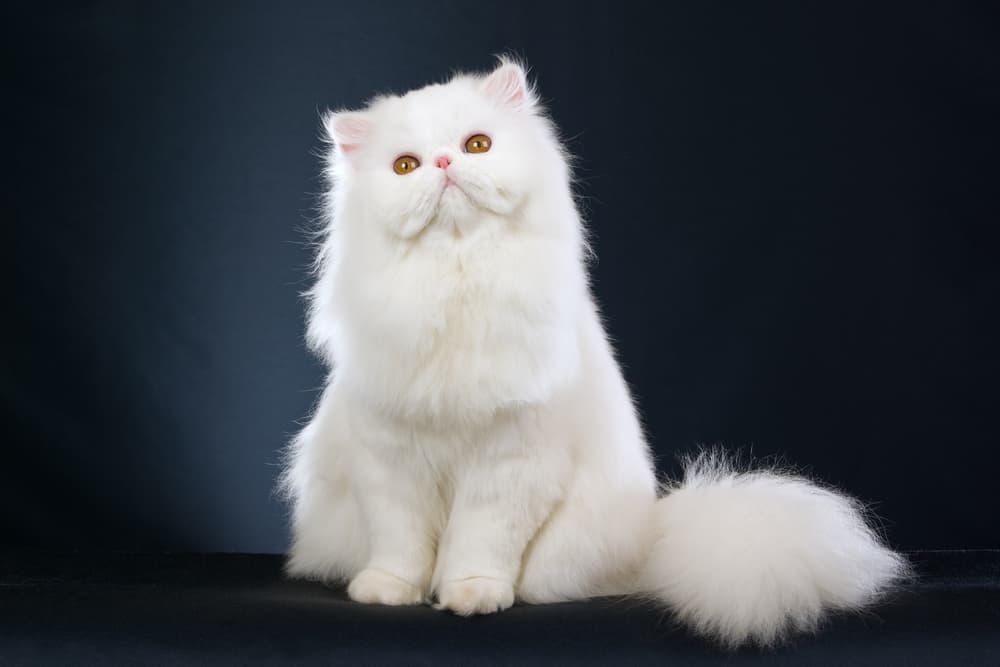
The Varieties of Persian Cats
Solid Color Persians
Solid color Persians are one of the most common and recognized varieties of the breed. These Persians have a single, uniform color throughout their coat, without any patterns or markings. Solid color Persians can come in a range of shades, including white, black, blue, cream, red, and many more. The richness and intensity of their coat color can vary depending on genetic factors and breeding lines. Solid color Persians have a classic and elegant appearance, showcasing the beauty of their dense and luxurious coat.
Tabby Patterned Persians
Tabby patterned Persians display a unique coat pattern characterized by stripes, swirls, or spots. The tabby pattern can appear in different variations, such as classic tabby, mackerel tabby, and spotted tabby. Each pattern has its own distinctive markings, adding to the charm and individuality of tabby Persians. The color combinations of tabby patterns can vary, including silver, brown, blue, and red. Tabby Persians are admired for their striking coat patterns, which accentuate their regal and captivating presence.
Bi-Color Persians
Bi-color Persians exhibit a combination of two colors in their coat, typically white and another color. The coat color is predominantly white, with patches or areas of another color, such as black, blue, cream, or tortoiseshell. The distribution and placement of the colored patches can vary, creating unique and eye-catching patterns. Bi-color Persians often have a white chest, stomach, and legs, while the rest of their body showcases the chosen color. This contrast of colors gives bi-color Persians a distinct and elegant appearance.
Himalayan Persians
Himalayan Persians, also known as Colorpoint Persians, are a specific color variation within the Persian breed. These Persians have a colorpoint coat pattern, similar to that of Siamese cats. Their coat is predominantly pale or cream-colored, with darker coloration on specific points, such as the ears, face, paws, and tail. The colorpoints can include shades of color, such as seal, blue, chocolate, and lilac. Himalayan Persians combine the regal beauty of Persians with the striking colorpoint patterns, resulting in a truly mesmerizing and captivating presence.
Exotic Shorthair Persians
Exotic Shorthair Persians, often referred to as the “shorthaired Persians,” are a variant of the Persian breed with a shorter coat. These Persians have the same distinct features and body structure as long-haired Persians but with a dense and plush short coat that requires less grooming. Exotic Shorthair Persians come in various colors and patterns, similar to their long-haired counterparts. Their shorter coat provides them with a more low-maintenance option while still preserving the charming and unique characteristics of Persian cats.
Famous Persian Cats in History
Choupette Lagerfeld – Fashion Icon
Choupette Lagerfeld, the beloved pet of the late fashion designer Karl Lagerfeld, gained fame as a fashion icon in her own right. Choupette, a white Persian cat, became a muse and companion to Lagerfeld, gracing the pages of fashion magazines and even having her own social media presence. Known for her luxurious coat and striking blue eyes, Choupette captured the attention of the fashion world and became a symbol of the bond between cats and their human companions.
Mutsu – Japanese Social Media Sensation
Mutsu, a Persian cat hailing from Japan, achieved international fame through social media. With his adorable round face, big eyes, and playful personality, Mutsu captured the hearts of cat lovers worldwide. His playful antics and unique expressions were documented on his dedicated Instagram account, which gained a large following. Mutsu’s charming and endearing presence made him a social media sensation, showcasing the beloved qualities of Persian cats.
Gigi and Bella – Karl Lagerfeld’s Beloved Companions
Karl Lagerfeld, the renowned fashion designer, was known for his love of Persian cats. Gigi and Bella, two chinchilla Persians, were Lagerfeld’s adored feline companions. Their stunning silver-white coats and expressive eyes made them the perfect muses for Lagerfeld’s creative endeavors. Gigi and Bella were seen accompanying Lagerfeld to fashion shows and events, embodying the elegance and refinement associated with Persian cats.
Babydoll – Influential Internet Celebrity
Babydoll, an influential Persian cat on the internet, captivated audiences with her striking beauty and charming personality. With her fluffy coat, big round eyes, and adorable face, Babydoll amassed a large following on social media platforms. Her cute and endearing presence made her a beloved online celebrity, showcasing the irresistible allure of Persian cats.
Maru – The Internet’s Favorite Box-Loving Cat
Maru, a Scottish Fold Persian crossbreed, became an internet sensation due to his love for boxes and quirky behavior. With his uniquely round face and expressive eyes, Maru’s playful and mischievous antics in boxes captured the hearts of millions. His videos and photos went viral, and Maru gained a devoted fan base worldwide. Maru’s delightful and entertaining nature showcased the fun-loving side of Persian cats.
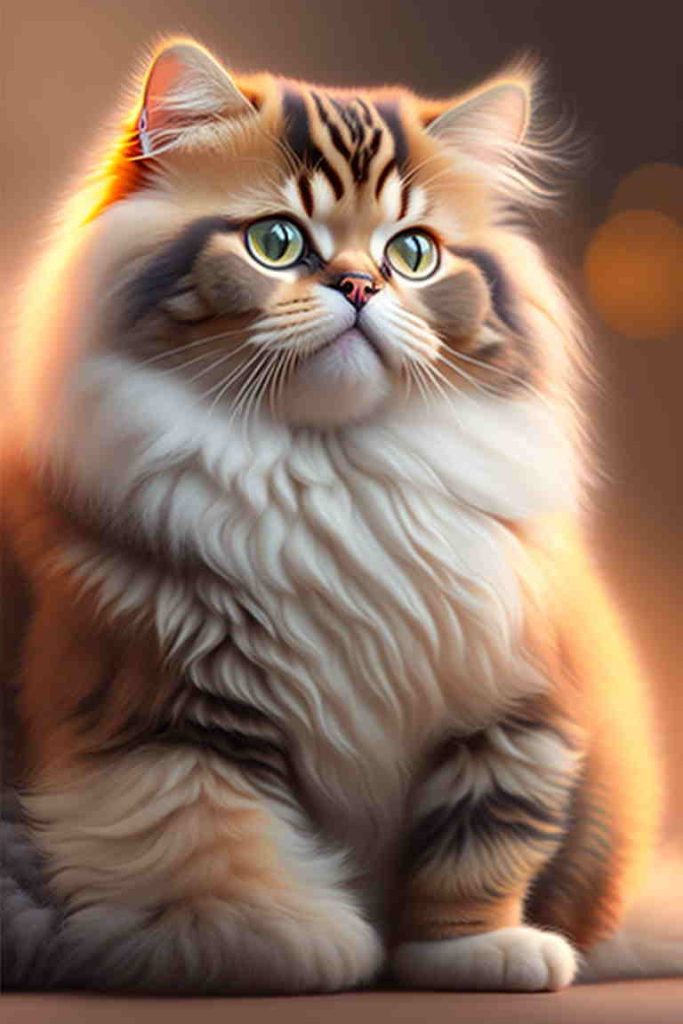
Common Misconceptions about Persian Cats
Persian Cats Are High-Maintenance
One common misconception about Persian cats is that they are high-maintenance pets. While their luxurious coat requires regular grooming to prevent matting and keep it in good condition, Persian cats can adapt well to grooming routines when introduced gradually from a young age. With proper grooming techniques, including daily brushing and occasional bathing, the grooming needs of Persian cats can be managed effectively. Additionally, their calm and gentle nature makes them cooperative during grooming sessions, debunking the belief that they are excessively high-maintenance.
Persian Cats Are Lazy and Boring
Another misconception about Persian cats is that they are lazy and boring. While Persian cats tend to have a lower activity level compared to some other cat breeds, they still enjoy interactive play sessions and spending time with their human companions. Persian cats can exhibit moments of playfulness and curiosity, albeit in a more relaxed manner. Their calm and gentle temperament make them excellent lap cats and companions, providing a serene and peaceful presence in the home.
Persian Cats Are Only for Show
Some people believe that Persian cats are only suitable for show and not as everyday pets. While Persian cats indeed have a strong presence in the show world due to their elegant appearance and distinct features, they are equally suited as beloved household companions. Persian cats make affectionate and loyal pets, forming strong bonds with their human companions. Their laid-back nature and adaptability make them well-suited for various living situations, including apartments and single-family homes.
Persian Cats Are Hypoallergenic
There is a common misconception that Persian cats are hypoallergenic and suitable for people with allergies. However, no cat breed is completely hypoallergenic, as allergens are primarily caused by a protein found in cat saliva and dander. While Persian cats may produce fewer allergens compared to some other breeds due to their dense coat, it does not guarantee that individuals with allergies will not experience symptoms. It is important for individuals with allergies to consult with a healthcare professional and spend time interacting with Persian cats to determine if they can tolerate their presence.
Persian Cats Are Not Good with Children
Contrary to popular belief, Persian cats can often form loving and gentle relationships with children. Their calm and patient nature makes them well-suited for households with children, as long as proper introductions and interactions are facilitated. It is important to teach children how to handle and interact with Persian cats respectfully, emphasizing the need for gentle touch and understanding personal space. With supervision and guidance, Persian cats can become cherished companions for children, providing comfort, love, and a sense of responsibility.
Famous Persian Cat Owners
Florence Nightingale
Florence Nightingale, the renowned nurse and social reformer, was a known lover of Persian cats. She had a deep affection for cats in general and often testified to their comforting presence during her demanding nursing duties. Persian cats, with their calm and gentle nature, provided Nightingale with solace and companionship during her extensive travels and time spent caring for the sick and wounded.
Andy Warhol
Andy Warhol, the iconic artist and figure of the pop art movement, had a deep appreciation for Persian cats. He often featured his beloved Persian cat in his artwork, capturing their beautiful and regal nature. Warhol’s fondness for Persian cats resonated with his fascination with glamour and celebrity, and he often incorporated them into his iconic pop art pieces.
Karl Lagerfeld
Karl Lagerfeld, the legendary fashion designer, had a profound love for Persian cats and was often accompanied by them. Lagerfeld found inspiration in the beauty and elegance of Persian cats, and they frequently served as his muses. He was known for having a deep bond with his Persian cats and even shared his everyday life with them, showcasing the special connection between him and these majestic felines.
Taylor Swift
Taylor Swift, the acclaimed singer-songwriter, has embraced the companionship of Persian cats in her life. Swift has shared her treasured moments with her Persian cats on social media, showcasing her love for their fluffy coats and endearing personalities. Persian cats have become a source of comfort and inspiration for Swift, aligning with her love for cats and their unique presence in her life.
Freddie Mercury
Freddie Mercury, the iconic frontman of the band Queen, was an avid lover of Persian cats. He had a strong bond with his beloved Persian cats and often expressed his affection for them in interviews and through his music. Mercury’s Persian cats brought him immense joy and comfort, serving as loyal companions during his successful music career and personal life.
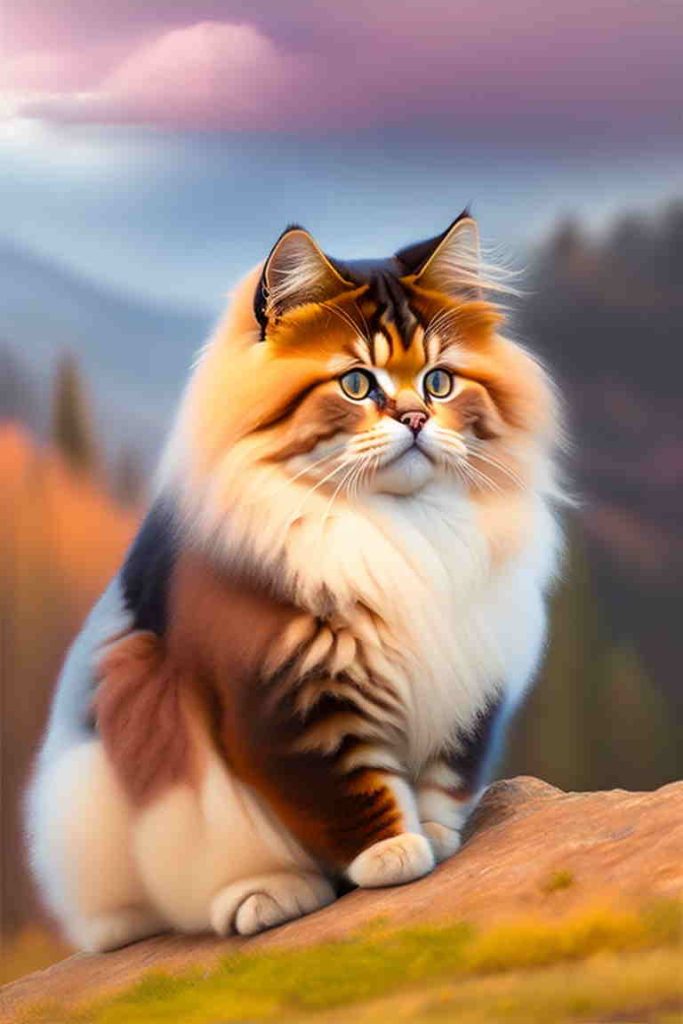
Persian Cats in Art, Literature, and Pop Culture
Persian Cats in Paintings
Throughout the history of art, Persian cats have frequently been depicted in paintings, showcasing their beauty and elegance. From ancient Egyptian tomb paintings to renowned European masterpieces, Persian cats have been the subject of admiration and inspiration. Their distinctive features and regal presence have made them popular choices for artists wanting to capture their charm and grace on canvas.
Persian Cats in Novels and Poetry
Persian cats have also found their way into the world of literature and poetry. Their ethereal beauty and mystical aura have sparked the imaginations of writers and poets, who often describe them in their works. Persian cats have been portrayed as symbols of grace, luxury, and wisdom, adding depth and enchantment to various literary pieces. Their serene and observant nature can be seen as a source of inspiration for writers exploring themes of introspection and contemplation.
Persian Cats in Movies and TV Shows
Persian cats have made appearances in numerous movies and TV shows, often portrayed as elegant and sophisticated companions. Their unique appearance and gentle demeanor make them captivating characters in both live-action and animated films. Whether playing the role of a regal companion or a mischievous sidekick, Persian cats add a touch of charm and elegance to the world of entertainment.
Persian Cats in Advertising
Persian cats have been featured in various advertising campaigns, representing elegance, luxury, and sophistication. Their iconic appearance and captivating beauty make them ideal models for showcasing products and brands associated with style and refinement. Persian cats’ regal presence resonates well in the advertising industry, capturing the attention of consumers and leaving a lasting impression.
Persian Cats in Internet Memes
Persian cats, with their captivating expressions and distinctive features, have become popular subjects of internet memes. These online images, videos, and captioned pictures often humorously highlight the quirks and stereotypes associated with Persian cats. Persian cats’ adorable and sometimes seemingly judgmental expressions have made them perfect meme material, bringing joy and laughter to cat lovers on various social media platforms.
And that wraps up our comprehensive article on Persian cats! We’ve explored their physical attributes, personality traits, history, care needs, behavior, showing potential, varieties, famous owners, famous cats in history, common misconceptions, and their representation in art and pop culture. Persian cats are truly remarkable companions, cherished for their beauty, grace, and calm nature. Whether you’re a lifelong Persian cat enthusiast or someone curious about these fascinating felines, we hope this article has provided you with valuable insights and a deeper appreciation for the captivating world of Persian cats.
